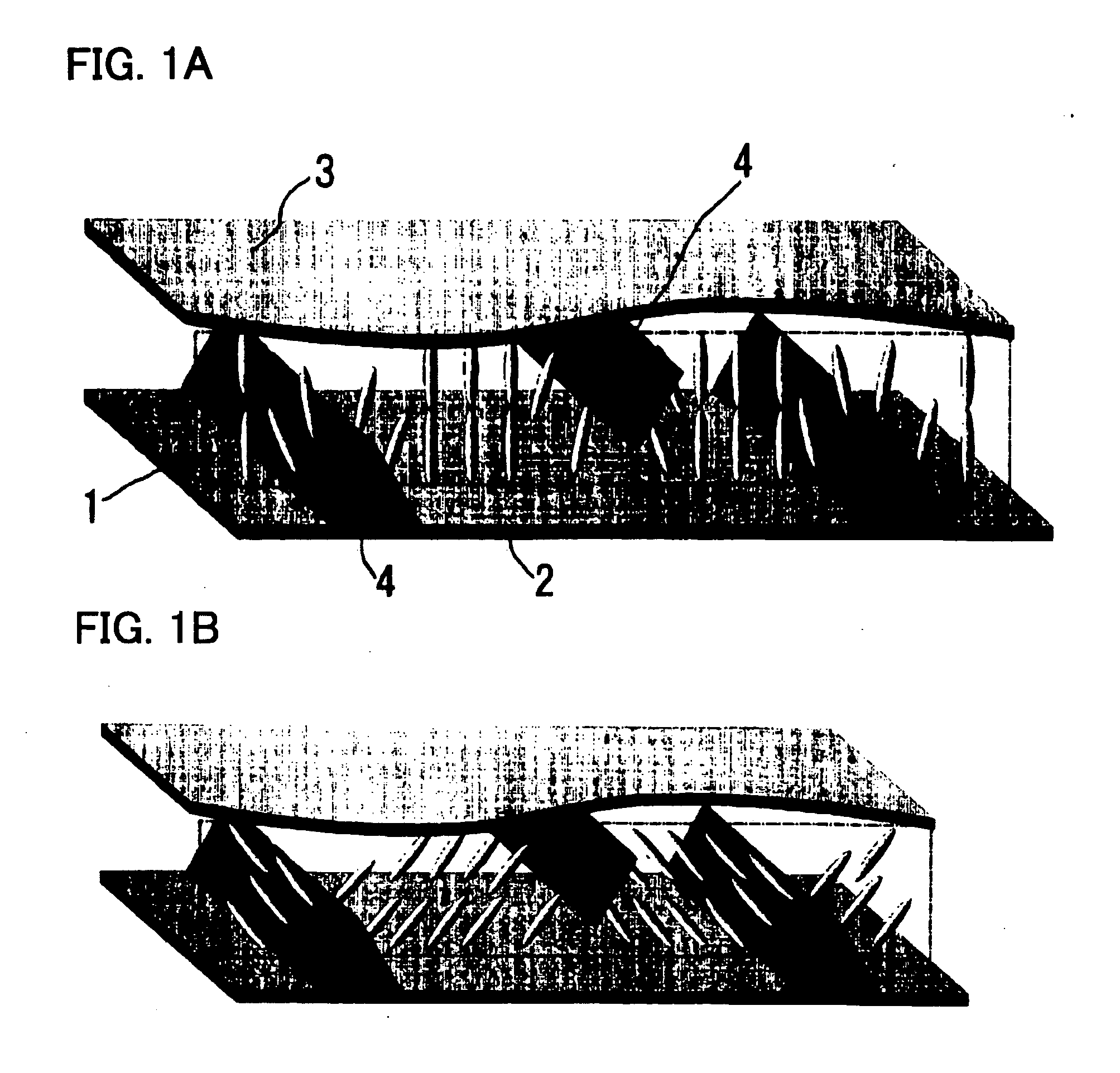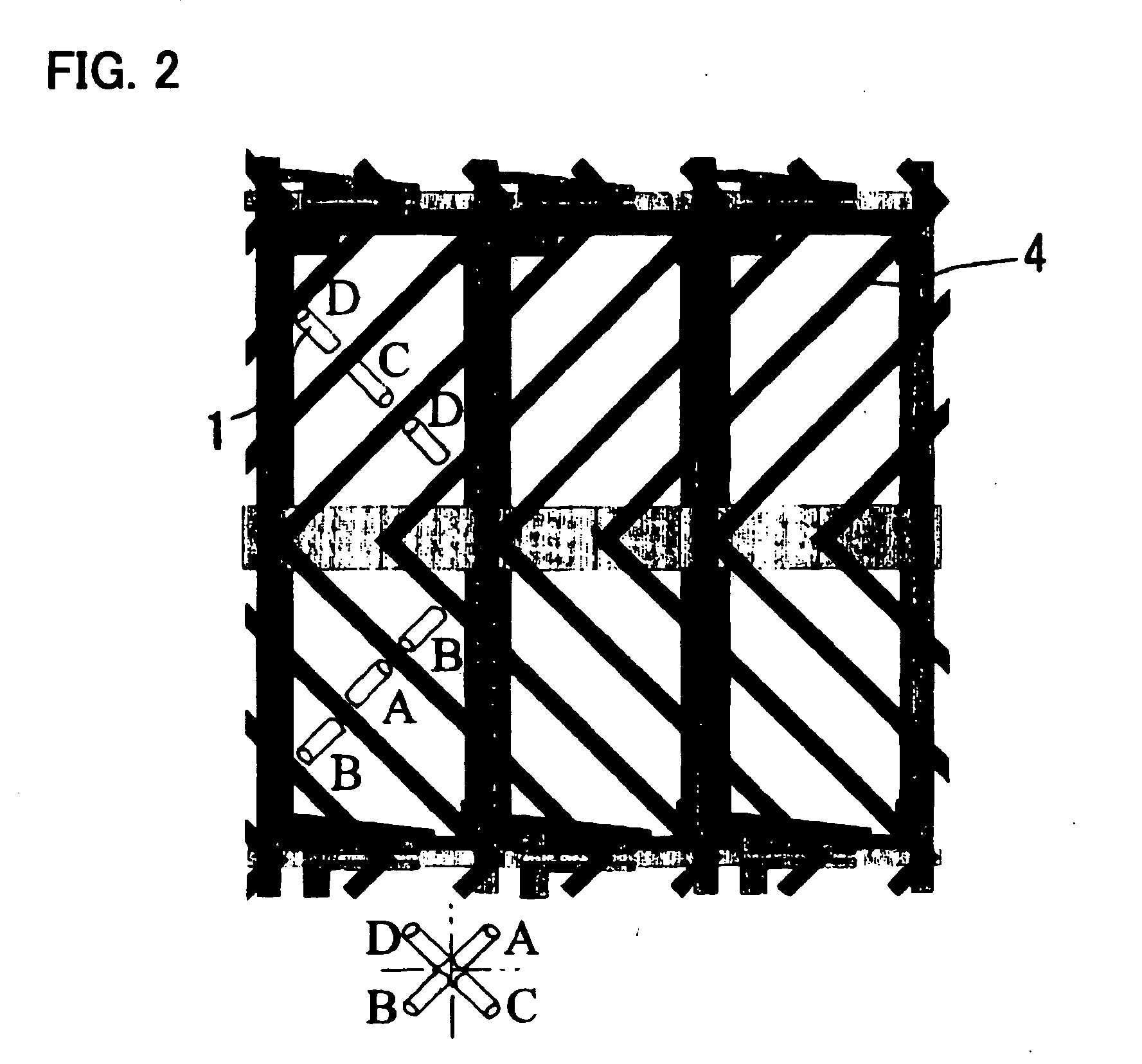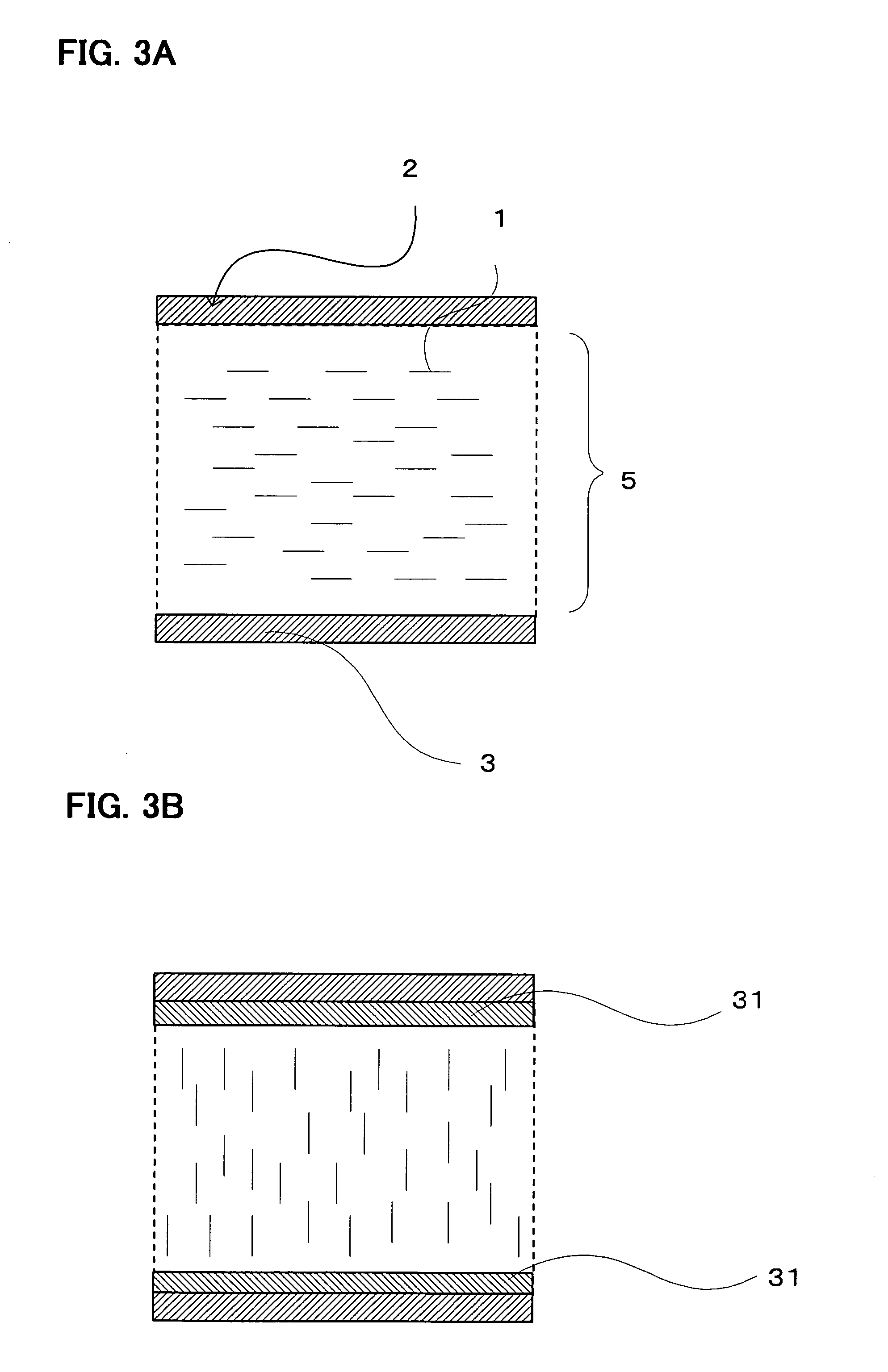Liquid crystal display device and method for manufacture of same
a liquid crystal display and display device technology, applied in the direction of thin material processing, instruments, chemistry apparatus and processes, etc., can solve the problems of reduced liquid crystal panel quality, poor viewing angle characteristics, and reduced yield, so as to improve the quality of liquid crystal panels and improve design freedom. , the effect of improving the quality of the liquid crystal panel
- Summary
- Abstract
- Description
- Claims
- Application Information
AI Technical Summary
Benefits of technology
Problems solved by technology
Method used
Image
Examples
example 1
[0099] 1.3×10−4 mol / g lauryl acrylate was dissolved in liquid crystals A, produced by Merck and having a negative dielectric constant anisotropy; then, a monomer having two functional groups of this invention, having a ring structure as shown in (a) of FIG. 6 was dissolved in the amount of 1.3×10−5 mol / g, equivalent to one tenth of the above amount; this liquid crystal composition was injected into an evaluation cell and the cell was sealed. The liquid crystals A had the properties of being substantially vertically aligned when no voltage is applied, and being inclined with a voltage applied, in directions regulated by protrusions formed on the substrates or by slits in the electrodes.
[0100] The evaluation cell with an MVA structure was fabricated using two glass substrates on which were formed electrodes of ITO (indium tin oxide), bonded together such that the cell thickness was 4.25 μm. No alignment control film was formed on the substrates.
[0101] (a) Alignment states were obser...
example 2
[0105] In (b) of Example 1, after irradiation at 1 mW / cm2 for 1500 mJ / cm2 (first process, equivalent to ultraviolet irradiation under the above first condition), the evaluation cell was heated to approximately 2° C. below the phase transition point for transitions from a liquid crystal state of the liquid crystal molecules to an isotropic state (N-I point). As a result, the white lines of alignment anomalies which had occurred up till then were nearly all eliminated. After this process, additional ultraviolet irradiation at 10 mW / cm2 for 7500 mJ / cm2 was performed (second process, equivalent to ultraviolet irradiation under the above second condition), and the aligned state was observed again. As a result, the small number of white lines that had remained before the additional irradiation vanished, and except for near the seal, substantially perfect vertical alignment was attained. Similarly to Example 1, white lines remained until the end near the seal, at which there is a particula...
example 3
[0107] After the irradiation at 1 mW / cm2 for 1500 mJ / cm2 in (b) of Example 1 (first process, equivalent to ultraviolet irradiation under the above first condition), instead of the heating performed in Example 2, the panel was passed through a laminator device for affixing a polarizing sheet, and pressure was applied. As a result, substantially the same effect as in the heating process performed in Example 2 was obtained. The results after an additional irradiation at an ultraviolet intensity of 10 mW / cm2 for 7500 mJ / cm2 (second process, equivalent to ultraviolet irradiation under the above second condition) were also substantially the same.
PUM
| Property | Measurement | Unit |
|---|---|---|
| dielectric constant | aaaaa | aaaaa |
| wavelength | aaaaa | aaaaa |
| temperature | aaaaa | aaaaa |
Abstract
Description
Claims
Application Information
 Login to View More
Login to View More - R&D
- Intellectual Property
- Life Sciences
- Materials
- Tech Scout
- Unparalleled Data Quality
- Higher Quality Content
- 60% Fewer Hallucinations
Browse by: Latest US Patents, China's latest patents, Technical Efficacy Thesaurus, Application Domain, Technology Topic, Popular Technical Reports.
© 2025 PatSnap. All rights reserved.Legal|Privacy policy|Modern Slavery Act Transparency Statement|Sitemap|About US| Contact US: help@patsnap.com



